Home / Albums / Tag Sailing Ship 63

 The Savannah
The Savannah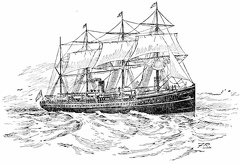 The Steamship Oceanic
The Steamship Oceanic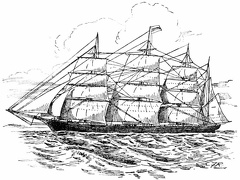 The Great Republic
The Great Republic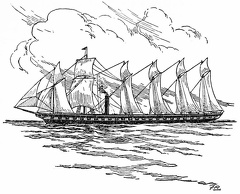 The Great Britain
The Great Britain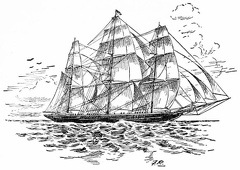 The Ariel, 1866
The Ariel, 1866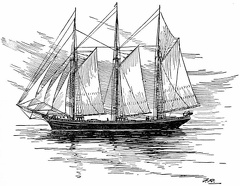 An American Coasting Schooner
An American Coasting Schooner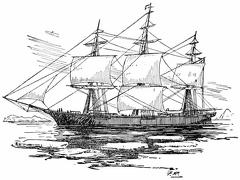 The Red Jacket
The Red Jacket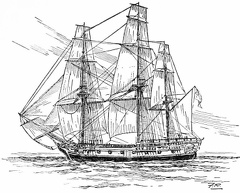 A Corvette of 1780
A Corvette of 1780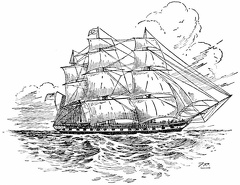 A British East Indiaman
A British East Indiaman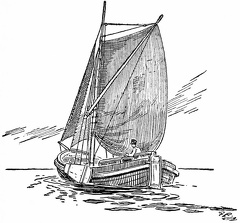 A 16th-Century Dutch Boat
A 16th-Century Dutch Boat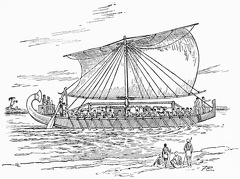 A Large Egyptian Ship of the 18th Dynasty
A Large Egyptian Ship of the 18th Dynasty The Santa Maria, the Niña and the Pinta
The Santa Maria, the Niña and the Pinta The Beagle Laid Ashore for Repairs at River Santa Cruz, Patagonia
The Beagle Laid Ashore for Repairs at River Santa Cruz, Patagonia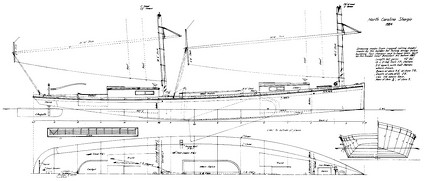 Plan of North Carolina sharpie of the 1880's
Plan of North Carolina sharpie of the 1880's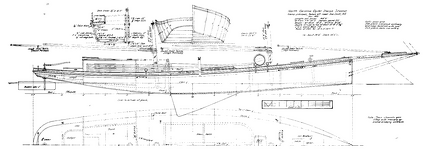 Plan of North Carolina sharpie schooner taken from remains of boat
Plan of North Carolina sharpie schooner taken from remains of boat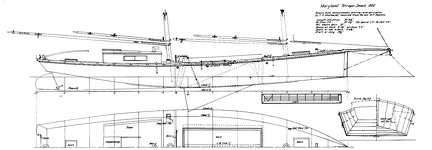 Plan of a Chesapeake Bay terrapin smack
Plan of a Chesapeake Bay terrapin smack Plan of a large Chesapeake Bay sharpie taken from remains of boat
Plan of a large Chesapeake Bay sharpie taken from remains of boat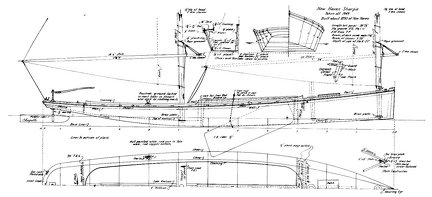 Plan of typical New Haven sharpie showing design and construction characteristics
Plan of typical New Haven sharpie showing design and construction characteristics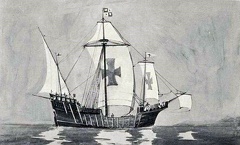 Caravel , 15th Century
Caravel , 15th Century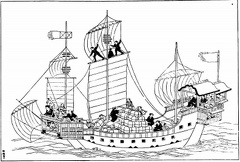 A Merchant Ship
A Merchant Ship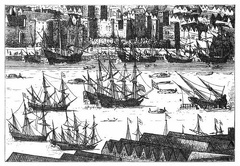 Shipping in the Thames, circa 1660
Shipping in the Thames, circa 1660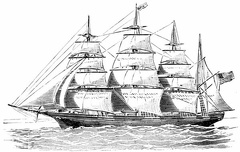 'Great Republic'
'Great Republic'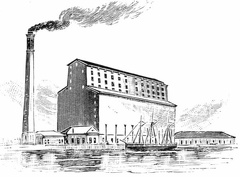 C. P. R. grain elevator at Fort William, Ontario
C. P. R. grain elevator at Fort William, Ontario Columbus sets sail
Columbus sets sail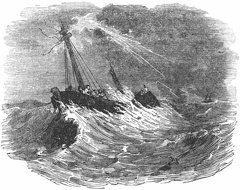 Columbus casting a barrel into the sea
Columbus casting a barrel into the sea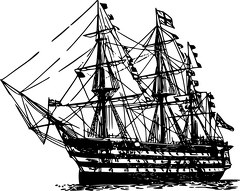 Nelson's Victory
Nelson's Victory Three-decked ship of the line, 18th century
Three-decked ship of the line, 18th century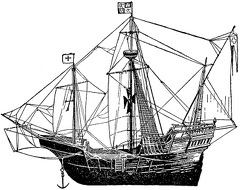 Flagship of Columbus
Flagship of Columbus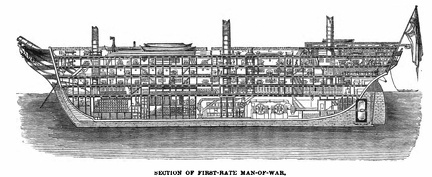 Section of First-rate Man-of-War
Section of First-rate Man-of-War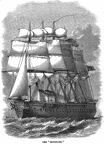 The 'Minotaur'
The 'Minotaur'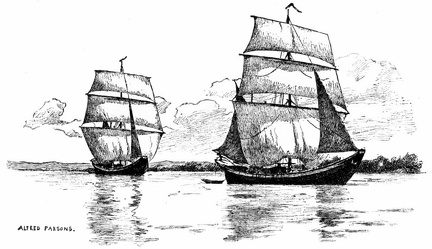 Turkish Vessels
Turkish Vessels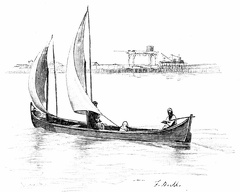 Turkish Sailing Lotka, Sulina
Turkish Sailing Lotka, Sulina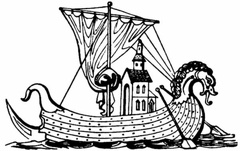 a ship in the reign of William the Conqueror
a ship in the reign of William the Conqueror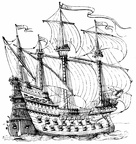 A ship of the reign of Henry VIII
A ship of the reign of Henry VIII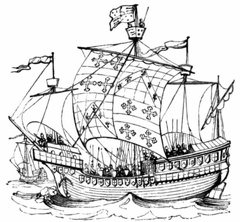 a ship of the reign of Edward IV
a ship of the reign of Edward IV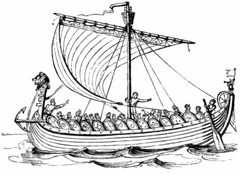 A Ship in the time of King Alfred
A Ship in the time of King Alfred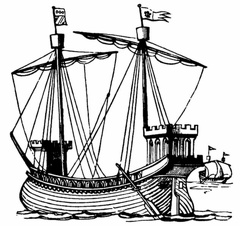 A ship in the time of Henry III
A ship in the time of Henry III Fight between the Centurion and a Spanish galleon
Fight between the Centurion and a Spanish galleon William the Conqueror’s Ship
William the Conqueror’s Ship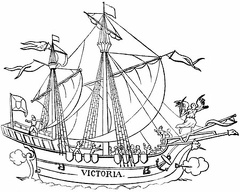 The Ship Victoria
The Ship Victoria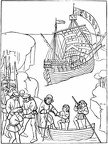 Ship of Richard Earl of Warwick
Ship of Richard Earl of Warwick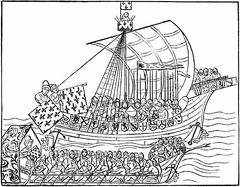 Ship and Galley
Ship and Galley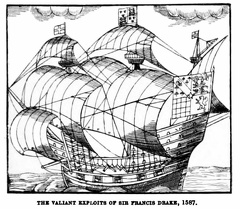 The Valiant Exploits of Sir Francis Drake
The Valiant Exploits of Sir Francis Drake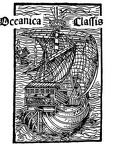 Columbus ship. A letter written by Columbus of America in 1493
Columbus ship. A letter written by Columbus of America in 1493 Sailing Ship Divider
Sailing Ship Divider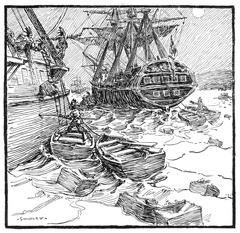 The 'Boston Tea Party.'
The 'Boston Tea Party.'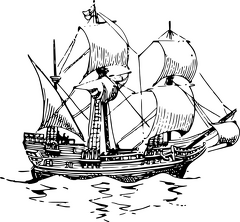 The Mayflower
The Mayflower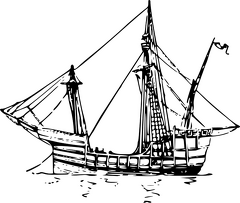 The Pinta
The Pinta The Santa Maria
The Santa Maria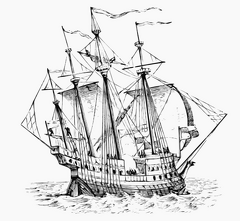 The Great Harry
The Great Harry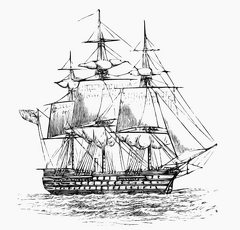 The Duke of Wellington
The Duke of Wellington La France
La France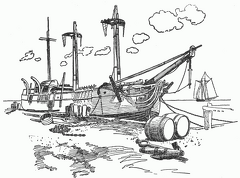 Rot at Mouldering Wharves
Rot at Mouldering Wharves Schooner rigged Sharpie
Schooner rigged Sharpie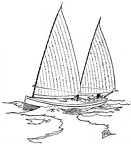 The Bug-Eye
The Bug-Eye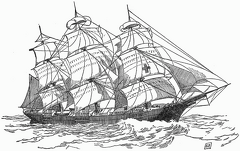 The Dreadnaught
The Dreadnaught The Ketch
The Ketch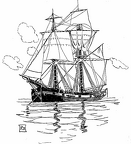 The Snow. an obsolete type
The Snow. an obsolete type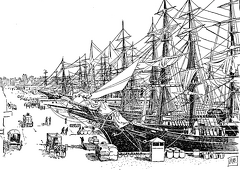 Waterfront
Waterfront A Pink
A Pink



